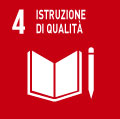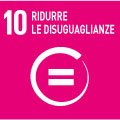- Docente: Beniamino Della Gala
- Crediti formativi: 6
- SSD: L-FIL-LET/11
- Lingua di insegnamento: Inglese
- Modalità didattica: Convenzionale - Lezioni in presenza
- Campus: Bologna
- Corso: Laurea Magistrale in Italianistica, culture letterarie europee, scienze linguistiche (cod. 9220)
-
dal 16/09/2024 al 23/10/2024
Conoscenze e abilità da conseguire
At the end of the course, students will have acquired knowledge of the relationships between Italian Literature and Visual Culture, from the second half of the twentieth century to the first decade of the new millennium, with a focus on photography, graphic novel, advertising, cinema, television and videogames. Students will be able to identify and analyze the interactions between different languages and they will be capable of contextualizing them in the contemporary cultural environment.
Contenuti
Literature and comics, comics in literature. Visual intertextuality in Italo Calvino and Umberto Eco
This is the first integrated module of the Contemporary Literary Cultures (C.I.) (LM) course and explores various ways in which words and images have interacted and shaped Italian culture in the 20th and 21st centuries.
The course aims to explore the relations between the Italian novel and comic strip fiction between the 20th and 21st centuries, highlighting the fundamental role played by comics in the personal formation and creative activity of some writers. Tracing the development and diffusion of comic strip fiction in Italy starting from the second half of the 20th century, we will focus in particular on how much the experience of comic strip readers influenced the narrative and non-fiction production of Italo Calvino and Umberto Eco, shaping their imagery and writing methods. We will analyse and discuss in class their interpretations of comic book characters and serial stories, as well as the different ways in which comics are incorporated into their texts.
Testi/Bibliografia
Students will have to read the following books:
- Italo Calvino, Tutte le cosmicomiche [The Complete Cosmicomics], Mondadori, 2023 (or any other edition): all the short stories included in the sections Le cosmicomiche [Cosmicomics] and Ti con zero [t zero];
- Italo Calvino, Il castello dei destini incrociati [The Castle of Crossed Destinies], Mondadori, 2023 (or any other edition);
- Umberto Eco, La misteriosa fiamma della regina Loana [The Mysterious Flame of Queen Loana], Bompiani, 2004 (or any other edition).
Critical essays:
- Umberto Eco, Apocalittici e integrati [Apocalypse Postponed], Bompiani, 2001 (or any other edition): Prefazione [Apocalyptic and Integrated Intellectuals: Mass communications and theories of mass culture]; Apocalittici e integrati: la cultura italiana e le comunicazioni di massa [Reactions of Apocalyptic and Integrated Intellectuals: Then (1964); Reactions of the Author: Now (1974 and 1977)]; Lettura di Steve Canyon [A Reading of Steve Canyon]; Il mondo di Charlie Brown [The World of Charlie Brown].
- Italo Calvino, Lezioni americane [Six Memos for the Next Millennium], Mondadori, 2022 (or any other edition): Visibilità [Visibility];
- Daniele Barbieri, Breve storia della letteratura a fumetti, Carocci, 2014;
- all documents uploaded on the VIRTUALE platform and marked as mandatory readings.
Students with SLD or temporary or permanent disabilities: it is suggested that they get in touch as soon as possible with the relevant University office (https://site.unibo.it/studenti-con-disabilita-e-dsa/en) and with the lecturer in order to seek together the most effective strategies for following the lessons and/or preparing for the examination.
Metodi didattici
Classes consist of a series of lectures interspersed with seminar sessions. Students are expected to participate in all class activities, actively contribute to class and group discussions and do all required reading.
Modalità di verifica e valutazione dell'apprendimento
The final test consists of the discussion of a paper (15,000-18,000 characters including spaces) on one of the course topics, compulsorily addressing one or more case studies included in the course reading list, if desired also in a comparative perspective with works and authors not discussed in class, or applying the theoretical models discussed in class to new case studies. The content and the structure of the paper must be preliminarily discussed with and approved by the teacher via email. In order to have the paper assessed, it is necessary to register via AlmaEsami: the final version must be sent to the professor by email, no later than 7 days before the exam date; then the paper will be subjected to anti-plagiarism software and AI-produced content detector and assessed. The oral examination consists of a brief discussion of the paper followed by some questions on the course topics that will help to supplement the written paper grade.
The final mark will be calculated by averaging the mark obtained with the other paper (15.000-18.000 characters including spaces) discussed at the end of the second module of the integrated course, titled Literature and the Arts (1) (LM), with adjustments following the outcome of the oral exam.
Erasmus students who only need to achieve 6 cfu have the option of taking one of the two integrated modules, so for them the final test consists of the discussion of only one longer paper (20.000-24.000 characters including spaces).
Students with SLD or temporary or permanent disabilities: it is necessary to contact the relevant University office (https://site.unibo.it/studenti-con-disabilita-e-dsa/en) with ample time in advance: the office will propose some adjustments, which must in any case be submitted 15 days in advance to the lecturer, who will assess the appropriateness of these in relation to the teaching objectives.
Marking Criteria
A pass mark is between 18 and 30. Below are the corresponding marking criteria:
28-30
- The paper has an elegant structure and develops a coherent argument, showing independent research and thinking. Appropriate evidence is presented to support the overall argument; a detailed analysis of particular cases is balanced with a broader discussion of the topic; and a reasoned and convincing conclusion is reached. The paper is written in grammatically correct English or Italian and the style is mature and appropriate to academic writing; the bibliography is extensive and follows standard bibliographic conventions, and the referencing is accurate throughout.
23-26
- The paper has a structure that is not entirely clear and tends towards description rather than analysis, with little critical reflection on the evidence that is being presented. Ideas tend to be stated rather than developed, with some gaps in knowledge. The paper is written in acceptable English or Italian, but there are grammatical and stylistic lapses. The bibliography is not extensive and is not always consistent with referencing. Text shows type errors.
18-22
- The paper has an unclear structure that does not allow the development of a coherent argument. The text is merely descriptive, with no or very little analysis, and may be very repetitive and/or shorter than it is required. The evidence is shown without critical reflection on its significance, ideas are baldly stated, and the knowledge displayed is basic. The language shows various problems of expression, and the text is marred by typographical errors. The referencing is of very poor quality and the bibliography is very thin.
Fail
- The paper has a very unclear structure and no coherent argument. There are serious inaccuracies involving fundamental aspects of the topic. The level of written English or Italian is very poor and impedes understanding. The text is marred with errors and referencing is carelessly presented and/or haphazard and/or made up.
Strumenti a supporto della didattica
Lectures will be supported by slides presentations as well as audio and video materials.
Orario di ricevimento
Consulta il sito web di Beniamino Della Gala
SDGs


L'insegnamento contribuisce al perseguimento degli Obiettivi di Sviluppo Sostenibile dell'Agenda 2030 dell'ONU.
